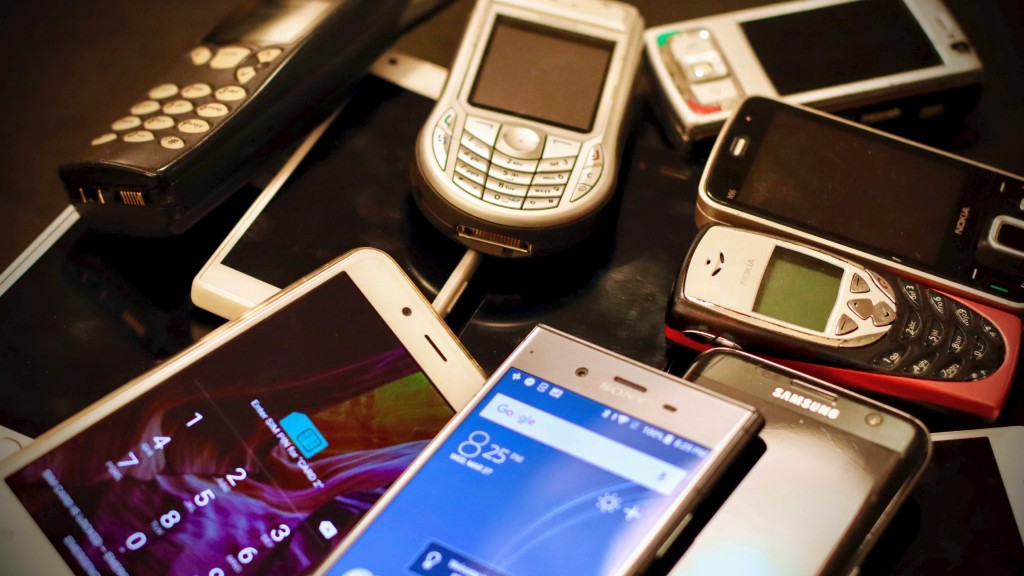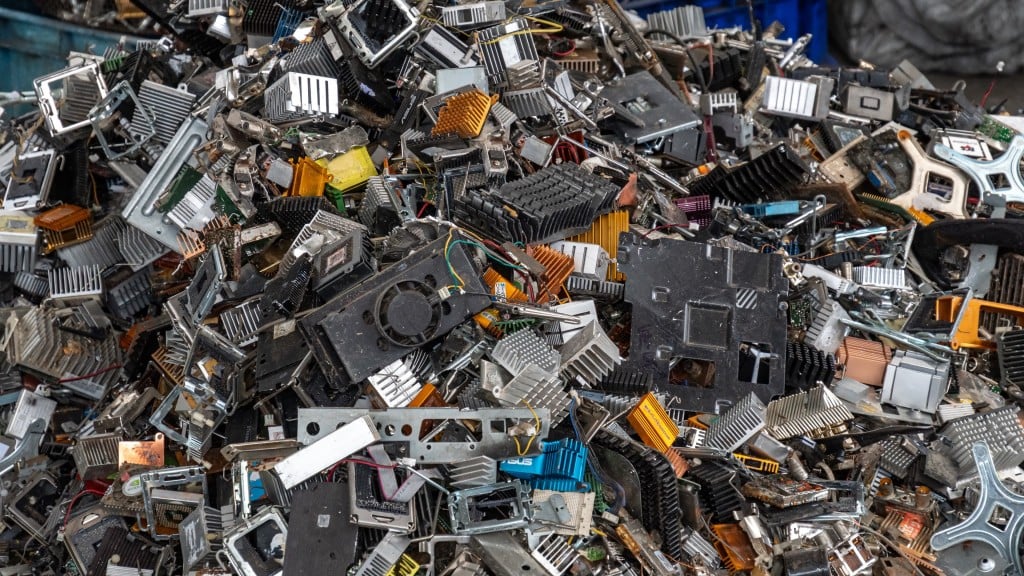Little of the 5.3 billion unused mobile phones will be properly disposed of in 2022, says WEEE Forum

Experts expect roughly 5.3 billion mobile / smartphones will drop out of use this year. Stacked flat atop one another at an average depth of 9 mm that many disused phones would rise roughly 50,000 km – 120 times higher than the International Space Station and one-eighth of the way to the moon.
And, despite their valuable gold, copper, silver, palladium, and other recyclable components, experts expect a majority will disappear into drawers, closets, cupboards or garages, or be tossed into waste bins bound for landfills or incineration. Surprisingly, mobile phones rank 4th among small EEE products most often hoarded by consumers.
Hoarding of the many types of small, unused, dead, or broken plug-in and battery-operated products is the focus of this year's 5th annual International E-Waste Day.
Organizers have released the results of surveys conducted to reveal why so many households and businesses fail to bring waste electrical and electronic equipment (WEEE) in for repair or recycling.
The surveys were conducted from June to September 2022, by the members of the WEEE Forum and the results were consolidated by the UN Institute for Training and Research (UNITAR) Sustainable Cycles (SCYCLE) program.
The surveys show that of 8,775 European households in six countries representing the diversity of the European Union – Portugal, Netherlands, Italy, Romania, and Slovenia – and in a separate U.K. survey, the average household contains 74 e-products such as phones, tablets, laptops, electric tools, hair dryers, toasters, and other appliances (excluding lamps).
Of that 74 average total e-products, 13 are being hoarded (nine of them unused but working, four broken).
The top five hoarded small EEE products in Europe are:
- Small consumer electronics and accessories (e.g. headphones, remote controls)
- Small household equipment (e.g. clocks, irons,)
- Small information technology equipment (e.g. external hard drives, routers, keyboards, mice)
- Mobile and smart-phones
- Small equipment for food preparation (e.g. toasters, food processing, grills)
Meanwhile, LED lamps rank at the top of the list of products most likely to be trashed.
Hoarded small kitchen and household equipment, laptops, and tablets as a share of the total stock of those products in households:
- Italy (29 percent)
- Netherlands (17 percent)
- United Kingdom (14 percent)
- Slovenia (12 percent)
- Romania (9 percent)
- Portugal (8 percent)
- Lebanon (4 percent)
Top reasons for hoarding WEEE of any kind in Europe:
- I might use it again in the future (46 percent)
- I plan on selling it / giving it away (15 percent)
- It has sentimental value (13 percent)
- It might have value in the future (9 percent)
- I don't know how to dispose of it (7 percent)
- Didn't have time, forgot about it, does not take up too much space (3 percent)
- Planned use in secondary residence (3 percent)
- Presence of sensitive data (2 percent)
- There is no incentive to recycle (1 percent)
"We focused this year on small e-waste items because it is very easy for them to accumulate, unused and unnoticed in households, or to be tossed into the ordinary garbage bin," says Pascal Leroy, director general of the WEEE Forum. "People tend not to realize that all these seemingly insignificant items have a lot of value, and together at a global level represent massive volumes.
"The producer responsibility organizations in the WEEE Forum that manage the collection of e-waste are constantly working to make the proper disposal of small e-waste simple and convenient for users and households," says Pascal Leroy. "Providing collection boxes in supermarkets, pick up of small broken appliances upon delivery of new ones and offering PO Boxes to return small e-waste are just some of the initiatives introduced to encourage the return of these items."
"As noted in our short public video, in 2022 alone, small EEE items such as cell phones, electric toothbrushes, toasters and cameras produced worldwide will weigh an estimated total of 24.5 million tonnes – four times the weight of the Great Pyramid of Giza," says Magdalena Charytanowicz of the WEEE Forum. "And these small items make up a significant proportion of the eight percent of all e-waste thrown into trash bins and eventually landfilled or incinerated.
"These devices offer many important resources that can be used in the production of new electronic devices or other equipment, such as wind turbines, electric car batteries or solar panels – all crucial for the green, digital transition to low-carbon societies."
In the past twenty years, the PROs in the WEEE Forum have collected, de-polluted, recycled, or prepared for the reuse of more than 30 million tonnes of WEEE. They have spent enormous sums on communication campaigns. Still, the challenges ahead remain daunting.
The extended producer responsibility (EPR) Grand Challenge Conference will mark the 20th anniversary of the WEEE Forum, a consortium of reputable e-waste collection organizations. The conference will also mark the 20th anniversary of EU Directive 2002/96/EC.
Dr. Kees Baldé, a senior scientific specialist at UNITAR SCYCLE, and a lead researcher behind the Global e-Waste Monitor, noted that many small electronic products such as disposable airplane earbuds or cables and adapters accumulate largely unnoticed in many households. All the defunct earbuds accumulated by 2026 strung together would stretch around the moon three times.
UN-led thought paper outlines options
Also launched to coincide with International e-Waste Day: a UN "thought paper" offers a series of ideas and options for reducing the global problem.
Led by the UN's International Telecommunication Union (ITU), with contributions from the WEEE Forum and StEP, the Solving the eWaste Problem Initiative – the paper details the pros and cons of a wide range of options, including, for example:
- Making all entities that have access to e-waste subject to minimum legal obligations (All Actors principle)
- Deposit return and take-back schemes
- Digital product passports, and
- An international EPR regime of states agreeing on baseline standards for EEE treatment and depollution, and harmonized EEE definitions, categories, methodologies, and principles.
UN certificate available to graduates of a new online e-waste training program
Meanwhile, UNITAR, the UN Institute for Training and Research (UNITAR), also launched a self-paced e-waste online training course open to anyone. A UNITAR certificate is available to graduates of the roughly 1.5-hour course (lectures, videos, illustrations, tests and a final exam).



